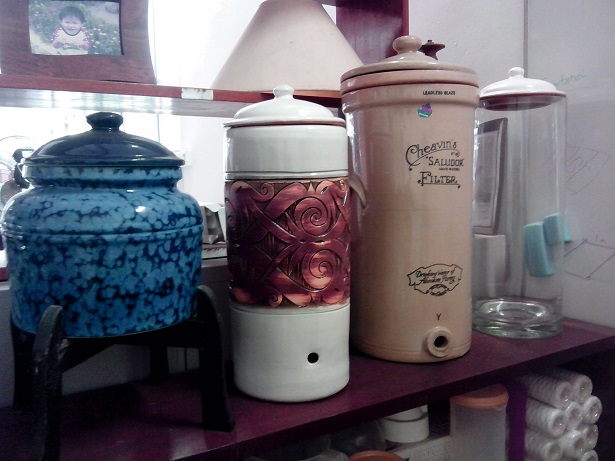I managed to steal some rare spare time to tag along with a NUS team and JH for a biodiversity survey of the floating wetlands at Pandan Reservoir.
What floating wetlands?!? If you have been observant enough, Pandan Reservoir and Lower Seletar Reservoirs have several bunches of plants floating right in the water. No, they are not aquatic weeds that suddenly grow up from the reservoir bed. They were deliberately placed there as an experiment(?) to improve the water quality. (Check out my previous post on how plants can clean up water.)
Figure: One of the floating wetlands at Pandan Reservoir. Notice that the plants on the wetland are different from those on the shore.
These floating wetlands are actually made of a floating plastic matrix above which a layer of coconut husks is embedded. The plants are allowed to extend their roots through these 2 layers.
Will they float away? No. Short of an extreme weather event, each wetland is anchored to the bed by rocks.
These floating wetlands dotted the northern shore of Pandan Reservoir. Are they effective in improving the water quality? My opinion is there are probably too few of such wetlands to make a difference to the reservoir as a whole. (Did I say that this was just an experiment?) Any change in water quality is probably localised and restricted to the immediate vicinity of the wetland. You will likely need a series of these wetlands to ring the entire reservoir. Maybe add another ring or two.
Figure: By the way, we had the luxury of sitting in a PUB motorboat as we passed by several floating wetlands
Next question - do bugs (macroinvertebrates) live under these wetlands? If so, what kind of bugs? These are interesting questions as my usual bug surveys were performed in running water (e.g. stream) or stationary water (e.g. pond). In the substrate of a floating wetland?!? No one knows...
Figure: Digging and scrapping and sweeping through the underside of a floating wetland
Figure: Voila! You can see a Marble Goby (top left) and a shrimp (bottom right) clearly here.
No so clear in the figure include: backswimmers (many!), unknown zooplankton (?) (many!), copepods, chironomids (your wriggling blood worms), a few damsel flies, dragonfly nymph exoskeletons (surprisingly, no live nymphs though we can see adult dragonflies happily scuttling through the air), chironomid eggs and pupa cases, mayflies (!). Looks like the biodiversity in these floating wetlands ain't so bad.
Figure: No, this is not part of the wetland survey. Actually, this is the primary task of the NUS team - deploying sampling traps in the reservoir to find out what kind of bugs can be lured into them.
Figure: On the way back, we stopped by this odd looking contraption floating in the middle of the reservoir. (Actually, it a buoy housing sensors though no one in the team knows what kind of sensors.) Of course, data from the sensors are transmitted telemetrically to some receiver on shore. Everything is this package is powered by solar energy as evident by the solar panels. See a previous post on descriptions of a similar setup. Oh, we didn't stop here just to admire this blue box. The NUS team actually wanted to catch some spider specimens here as a healthy population of spiders seems to be thriving on this buoy in the middle of nowhere.
You are now unsubscribed
-
CLS
We have removed your email address from our list.
We're sorry to see you go.
Was this a mistake? Did you forward one of our emails to a friend, and...
4 years ago












No comments:
Post a Comment